Prilosec dosages: 40 mg, 20 mg, 10 mg
Prilosec packs: 30 caps, 60 caps, 90 caps, 120 caps, 180 caps, 270 caps, 360 caps
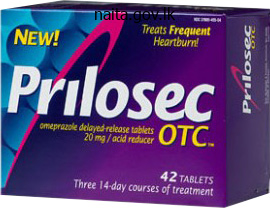
Order prilosec 40mg with amex
The rectosigmoid is held on traction, while the stapler is gently inserted into the pelvis around the rectal segment. The ureters and any lateral tissue are pushed sa ely away, the stapler is purple, and the low anterior resection specimen is eliminated. The pelvis is irrigated, and a laparotomy sponge is le t in place to tamponade any sur ace oozing. Adson orceps are used to delicately place any surrounding atty tissue on traction, and an electrosurgical blade is used to dissect these away rom the bowel serosa. First, the anvil is detached rom the stapler, lubricated, and gently inserted by rotating it into the proximal sigmoid colon. Sequential stitches that pierce through bowel serosa, muscularis, and mucosa create a purse string around the anvil. These "through-andthrough" stitches using 2�0 Prolene suture are positioned 5 to 7 mm rom the mucosal edge. The purse string begins and ends on the skin o the bowel serosa across the anvil spike and is then tied securely. A wing nut located on the gadget handle is gently rotated, and this extends the sha t and its spike. In the abdomen, light countertraction in opposition to the rectum may be assist ul as the sharp spike tip pops by way of the entire bowel wall thickness. Serious occasions such as bowel obstruction and stula develop in requently (Gillette-Cloven, 2001). Long-term, some patients will have a poor unctional outcome, together with ecal incontinence or persistent constipation (Rasmussen, 2003). Low rectal anastomoses have much greater intraperitoneal leakage charges than giant bowel anastomoses. I a leak is current, it might seem as a pelvic abscess, or at instances, distinction extravasation may be demonstrated into the uid collection. Occasionally, this complication can be success ully managed with percutaneous drainage o the abscess, bowel rest, and broad-spectrum antibiotics. Otherwise, a brief diverting loop ileostomy or colostomy could additionally be required (Mourton, 2005). Risk actors or postoperative leakage embrace previous pelvic irradiation, diabetes mellitus, low preoperative serum albumin, lengthy surgical duration, and a low anastomosis (6 cm rom the anal verge) (Matthiessen, 2004; Mirhashemi, 2000; Richardson, 2006). Occasionally, air is being erroneously pumped into the vagina rather than the rectum due to incorrect placement o the pink rubber catheter. Rein orcing interrupted suture to shut the air leak could also be tried in select situations, however this is riskier. There are relatively ew indications or intestinal bypass in gynecologic oncology, and this procedure accounts or lower than 5 % o all bowel operations per ormed or these cancers (Barnhill, 1991; Winter, 2003). In all circumstances, removal o diseased bowel and end-to-end anastomosis is pre erable. However, some patients will have unresectable tumor, dense adhesions, in depth radiation injury, or other prohibitive actors. In these cases, a poor determination to proceed with an aggressive dissection can result in numerous enterotomies, hemorrhage, or other intraoperative catastrophes with major postoperative sequelae. Instead, an intestinal bypass can o ten rapidly be per ormed with minimal morbidity. An electrosurgical blade is used to enter the small bowel lumen on its antimesenteric sur ace. With stapling, the initial small bowel openings that were reduce to admit the stapler orks are used into one open de ect. As a end result this A staple line, the diseased bowel loop is also simultaneously sealed. Occasionally, small bleeding sites on the staple line will want spot electrosurgical coagulation. Patient Preparation Aggressive bowel preparation with oral brokers is usually contraindicated due to bowel obstruction or other dire circumstances. Invariably, pelvic radiation accidents are located on the terminal ileum, but there may be complex stulas or a quantity of websites o obstruction to be addressed. In most circumstances during which a bypass is taken into account, a surgeon ought to anticipate limitations in adequately exploring the stomach intraoperatively.
Syndromes
- Your surgeon will also take out the adrenal gland and some lymph nodes.
- Caffeine
- Pantothenic acid and biotin
- Moist (humidified) air
- Water loss (dehydration)
- Rash--small pinpoint red marks on the skin (petechiae)
- Thrombocytopenia
- Restlessness, agitation, lethargy, or confusion
- Weak hand grip
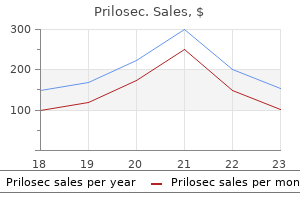
Purchase prilosec 10mg overnight delivery
C 1196 Atlas of Gynecologic Surgery Once the phase is chosen, a window is made in the mesocolon proximal and distal to the lesion. Partial in racolic omentectomy could also be required or resections involving the transverse colon. A second stapling and transection is then repeated on the different Penrose drain website. During this course of, as much o the mesentery as potential is preserved to provide sufficient blood supply to the anastomosis. For bigger resections, the mesentery o every segment may also need to be dissected to achieve su icient mobility. DeBakey orceps grasp surrounding atty tissue and place it on traction, whereas an electrosurgical blade is used to dissect this tissue away rom the bowel serosa. The antimesenteric tip o each staple line is excised with scissors, and the bowel is held vertically by Allis clamps to prevent ecal spill. One or two seromuscular silk keep sutures could additionally be placed distally on every bowel finish to help align the correct place and prevent slippage. The bowel segments are evenly positioned, and the device is then purple alongside the antimesenteric sur aces and eliminated. This stapler locations two staggered rows o titanium staples and concurrently transects tissue between these rows. The bowel interior should be examined or bleeding sites, which can be electrosurgically coagulated. The mesenteric de ect is reapproximated with interrupted or working 0-gauge delayed-absorbable suture to forestall an internal hernia. Moreover, sufferers undergoing multiple bowel resections have higher blood loss and longer hospital stay (Salani, 2007). Anastomotic leaks are the most speci c complication and typically current as an abscess or stula, or as peritonitis inside days or even weeks o surgery. However, urgent reoperation is indicated or nonlocalized intraperitoneal per oration and its ensuing peritonitis. Pelvic abscesses may also outcome rom intraoperative ecal spillage or hematoma superin ection. In addition, symptomatic anastomotic strictures are in requent and o ten current as colonic obstruction. Some strictures could be managed with endoscopic stents, however o ten they require reoperation. Small or massive bowel may turn into obstructed by postoperative adhesions or tumor development. Additionally, to cut back the e luent quantity, the chosen loop is located as distally alongside the bowel length as potential. On occasion, tethering o small bowel by carcinomatosis or radiation damage will signi icantly cut back mobility and will require a extra proximal diversion. The ileostomy is "matured" by longitudinally incising the bowel loop and everting its partitions with Allis clamps. Circum erential interrupted stitches o 3�0 and 4�0 gauge delayed-absorbable sutures are positioned by way of the dermis and bowel mucosa. I a total colectomy is per ormed or i the bowel is simply too tethered or the patient too overweight or a loop to attain the stomach wall, the distal ileum might need to be divided as an alternative o introduced out as a loop. An applicable stoma web site is identi ied, and with a ew modi ications, the tip ileostomy is matured as in colostomy (Section 46-17, p. An attempt is made to evert the only stoma by turning the bowel wall over on itsel using Allis clamps. In every quadrant o the stoma, stitches o 3�0 gauge delayed absorbable suture are positioned by way of the dermis, the seromuscular layer o the bowel on the skin degree, and a ull-thickness chew at the reduce edge o the everted bowel. Consent In common, many o the complications rom this process mirror these o colostomy: retraction, stricture, obstruction, and herniation. Patients are in ormed that temporary loop ileostomies can be taken down later and not using a laparotomy.
Order prilosec pills in toronto
With the assistant surgeon holding medial traction on the superior vesical artery, the obturator ossa may be uncovered. I present, nodal tissue alongside the in eromedial wall o the exterior iliac vein is transected with blunt and electrosurgical dissection. This nodal bundle lies deep to the exterior iliac vein however super cial to the obturator nerve. This blunt dissection is per ormed in the heart o the ossa to minimize damage to surrounding deep pelvic vasculature. A laparoscopic omentectomy is per ormed by identi ying and elevating the omentum away rom the transverse colon. The intervening vascular attachments are then ligated with a vessel-sealing energy tool or endoscopic stapler. Once utterly dissected, the omentum is placed in an endoscopic bag and removed via a transabdominal 12-mm port. All specimens undergo minimal manipulation and are eliminated through an endoscopic bag to help decrease the danger o port-site or intraabdominal tumor implantation. Fascial de ects larger than 10 mm are sutured to lower the risk o herniation at those websites. Interrupted stitches o 0-gauge delayed-absorbable suture are placed to reapproximate this ascia. Alternatively, a devoted trocar-site closure device, described in Chapter 41 (p. Patients often are in a position to tolerate clear liquids shortly, ollowed by a regular food regimen and discharge on postoperative day 1. With their ache sometimes managed with oral pain treatment, patients ambulate early. Postoperative complications may embrace pelvic lymphocele ormation, neurologic accidents, or trocar-site herniation. The exact incidence is unknown, however estimates vary rom 1 to 27 p.c a ter surgical staging or endometrial most cancers (odo, 2010). The risk increases i more lymph nodes are eliminated or i pelvic radiation is administered a ter surgery. Also known as radical oophorectomy, this e ective method aids a maximal cytoreductive surgical e ort. As a result o eradicating all microscopic and in ltrative peritoneal tumor within the pelvis, improved survival charges may be anticipated in sufferers with superior epithelial ovarian cancer (Aletti, 2006b). Moreover, pelvic recurrence charges are low and re ect the completeness o pelvic tumor eradication (Hertel, 2001). Many o the ideas o en bloc pelvic resection mirror those o different procedures in gynecologic oncology. Moreover, patients are routinely typed and crossmatched or packed purple blood cell substitute, as trans usions are requently indicated (Bristow, 2003). A ter exploration and dedication o tumor resectability, it might be lengthened as wanted. Moreover, tremendous cial implants o ten coat the allopian tubes, the vesicouterine old, and much o the encircling pelvic peritoneum. Bimanual examination under common anesthesia is especially important to con irm the necessity or low lithotomy leg positioning in booted support stirrups. Sterile preparation o the stomach, perineum, and vagina is perormed, and a Foley catheter is placed. With the presumed analysis o superior ovarian cancer, patients are prepared or anticipated cytoreductive surgery. However, the need or en bloc resection is often dictated by intraoperative ndings somewhat than preoperative testing. Consent In basic, women with superior ovarian cancer present process cytoreductive surgical procedure are at signi cant danger or problems.
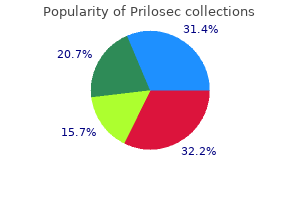
Discount prilosec 10 mg free shipping
The interval between catheterizations is progressively elevated over weeks to reach 6 hours through the day and span sleep hours at night time. More than hal o patients will have a conduit-related complication postoperatively. Fortunately, most may be success ully managed conservatively with out the need or reoperation (Ramirez, 2002). The commonest urinary issues are ureteral stricture or obstruction, di cult catheterization, and pyelonephritis (Angioli, 1998; Goldberg, 2006). The gastrointestinal complication price attributed to Miami pouch is less than 10 p.c and includes stulas (Mirhashemi, 2004). Other much less common indications embody congenital absence o the vagina, postirradiation stenosis, and complete vaginectomy. Not every girl will need a model new vagina, and others will be sad with the unctional outcome (Gleeson, 1994a). Moreover, reconstruction could signi cantly prolong an already prolonged operation and lead to further perioperative morbidity (Mirhashemi, 2002). However, proponents suggest that lling the big pelvic de ect and bringing in a brand new supply o blood supply may very well prevent postoperative stula or abscess ormation (Goldberg, 2006; Jurado, 2000). O the three choices or vaginal reconstruction, pores and skin aps, corresponding to rhomboid f aps, pudendal thigh asciocutaneous f aps, and development or rotational f aps, are technically the best to per orm (Burke, 1994; Gleeson, 1994b; Lee, 2006). However, these require that virtually all o the native subcutaneous tissue has been retained at the neovagina website and require months o stenting with a vaginal mould to stop stricture (Kusiak, 1996). Regardless o reconstruction approach, sexual unction is o ten signi cantly impaired in girls a ter pelvic exenteration (Hockel, 2008; Ratli, 1996). Legs are positioned in normal lithotomy in booted help stirrups to permit adequate perineal entry. From a perineal method, the deliberate incisions are marked along the pores and skin rom the non-hair-bearing areas simply lateral to the labia majora. Some ladies could have unrealistic expectations that are necessary to address preoperatively. The affected person must also bear in mind that intraoperative problems may dictate a change o plans and the need to abort reconstruction. Consent the potential morbidity o the neovagina depends on the kind o reconstruction. Flap necrosis, prolapse, wound separation, or other complications could require reoperation and/or result in an unsatis ying end result. Postoperative patient issues are anticipated and embrace sel -consciousness about being seen in the nude by their associate and vaginal dryness or discharge (Ratli, 1996). Patient Preparation the previous exenterative surgical procedure typically dictates preoperative preparation. The distal omentum is rolled right into a cylinder and sutured along with interrupted stitches o 3�0 gauge delayed-absorbable suture. The proximal finish could be closed abdominally with similar interrupted sutures or the transverse anastomosis (A) stapler without dividing it totally. From the perineal side, the omental cylinder is then sutured to the vaginal introitus. The mould is positioned into the neovaginal space and sutured into place on the introitus. Each o the remaining smaller perineal de ects, now above and below the neovagina, is closed within the midline with interrupted stitches o 3�0 gauge delayedabsorbable suture. From a perineal strategy, a re erence line is drawn on the medial thigh rom the pubic tubercle to the medial tibial plateau ollowing the adductor longus muscle. In erior to this line, an island o pores and skin, its related subcutaneous tissue, and the gracilis muscle will serve as the lap. The apex o the neovagina may then be abdominally sutured to the hole o the sacrum as in a standard sacrocolpopexy (Section 45-17, p. Intraabdominally, the neovagina is then lined with an omental J- ap to provide further neovascularization.
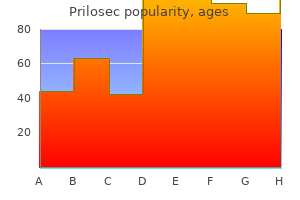
Generic prilosec 10mg line
In general, postoperative ileus will resolve in a quantity of days, and sufferers may begin oral alimentation. The underlying medical situation prompting the necessity or bypass surgical procedure will dictate most o the clinical course. In basic, the consenting process or gynecologic surgical procedure includes a discussion o attainable "different indicated procedures" corresponding to appendectomy when anticipated intraoperative ndings and the potential or per orming an appendectomy are uncertain. Hematoma ormation at the mesoappendix might trigger an ileus or partial small bowel obstruction. Appendectomy Removal o the appendix could also be indicated during gynecologic surgery or various causes. The need, however, is often not acknowledged until an operation is already underway, as indicators and symptoms o benign gynecologic circumstances can mimic appendicitis (Bowling, 2006; Fayez, 1995; Ste anidis, 1999). Ovarian most cancers requently metastasizes to the appendix, which thereby o ten warrants elimination (Ayhan, 2005). T us, the preliminary surgical intervention is o ten per ormed by a gynecologic oncologist (Dietrich, 2007). Pseudomyxoma peritonei is the classic kind o mucinous tumor o appendiceal origin that spreads to the ovaries and may implant all through the stomach (Prayson, 1994). Elective coincidental appendectomy is de ned as the removal o an appendix at the time o one other surgical procedure unrelated to considerable appendiceal pathology. Possible bene ts embrace stopping a uture emergency appendectomy and excluding appendicitis in patients with continual pelvic ache or endometriosis. Other teams that will bene t embrace ladies in whom pelvic or stomach radiation or chemotherapy is anticipated, girls undergoing intensive pelvic or stomach surgical procedure in which major adhesions are anticipated postoperatively, and patients such because the developmentally disabled in whom making the diagnosis o appendicitis could additionally be di cult as a outcome of o diminished capability to understand or communicate signs (American College o Obstetricians and Gynecologists, 2014). Insertion o the terminal ileum ought to be seen, and the appendix is often apparent at this point. In this situation, the convergence o the three teniae coli can be ollowed to locate the appendiceal base. The rst hemostat is positioned horizontally-aiming instantly towards the base o the appendix. The second hemostat is placed at a 30-degree angle so that the tips meet, however Metzenbaum scissors have room to minimize between the two clamps. This step is typically repeated once or twice to com ortably attain the base o the appendix. An alternative is to use an electrothermal bipolar coagulator (LigaSure) to divide the mesoappendix. At this point, the appendix has been utterly isolated rom the mesoappendix and continues to be held vertically by a Babcock clamp. A irst hemostat is positioned on the appendiceal base, and a second is positioned instantly above. Postoperative hospitalization is individualized and is dependent on concurrent surgical procedures and associated scientific signs. A laparoscopic approach or an oblique McBurney incision in the best decrease quadrant o the stomach is historically selected or appendectomy. However, in gynecologic instances, the wants o deliberate concurrent procedures will commonly dictate incision choice. Surgeries for Gynecologic Malignancies the second and third clamps, and the appendix is eliminated. A 2�0 silk suture is tied beneath the rst hemostat as that clamp is slowly eliminated. A separate suture is then tied underneath the second hemostat or added security o the appendiceal stump. It is distinguished rom a radical complete vulvectomy in that skinning vulvectomy removes only the squamous epithelium and dermis and preserves the subcutaneous at and deeper tissues. A less extensive, unilateral procedure is healthier re erred to as a wide local excision or partial simple vulvectomy (Section 43-28, p. Paget illness without underlying adenocarcinoma and vulvar dystrophies re ractory to normal therapy are other uncommon indications (Ayhan, 1998; Curtin, 1990; Rettenmaier, 1985). Despite its much less radical resection, skinning vulvectomy can nonetheless be dis guring and psychologically devastating. Patient Preparation Complete bowel preparation is in uenced by surgeon pre erence and solely indicated i perianal pores and skin is to be excised.
Wild Oat Herb (Oats). Prilosec.
- Blocking fat from being absorbed from the gut, preventing fat redistribution syndrome in people with HIV disease, preventing gallstones, treating irritable bowel syndrome (IBS), diverticulosis, inflammatory bowel disease, constipation, anxiety, stress, nerve disorders, bladder weakness, joint and tendon disorders, gout, kidney conditions, opium and nicotine withdrawal, skin diseases, and other conditions.
- Reducing blood sugar levels in people with diabetes when oat bran is used in the diet.
- Preventing cancer in the large intestine (colon cancer) when oat bran is used in the diet.
- Are there safety concerns?
- What is Oats?
Source: https://www.rxlist.com/script/main/art.asp?articlekey=96791
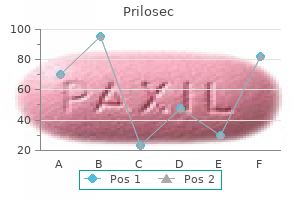
Order prilosec master card
A variety o car iovascular, respiratory, en ocrine, an neurologic con itions can present with anxiousness because the chie complaint. The i erential iagnosis o panic isor er is complicate by a high price o comorbi ity with different psychiatric con itions, particularly alcohol an benzo iazepine abuse, which sufferers initially use in an attempt at sel -me ication. Some 75% o panic isor er sufferers will also satis y standards or main epression sooner or later in their illness. When the historical past is nonspeci c, bodily examination an ocuse laboratory testing have to be use to rule out nervousness states ensuing rom me ical isor ers similar to pheochromocytoma, thyrotoxicosis, or hypoglycemia. In two stu ies, panic isorer was the primary iagnosis in 43% o sufferers with chest pain who ha normal coronary angiograms an was current in 9% o all outpatients re erre or automotive iac analysis. Panic isor er has additionally been iagnose in many sufferers re erre or pulmonary unction testing or with symptoms o irritable bowel syn rome. Panic isor er shows amilial aggregation; the isor er is concorant in 30�45% o monozygotic twins, an genomewi e screens have i enti e suggestive threat loci. Acute panic assaults appear to be associate with enhance nora renergic ischarges in the locus coeruleus. Diagnostic criteria require no much less than 1 month o concern or worry concerning the assaults or a change in behavior relate to them. Panic assaults have a su en onset, eveloping inside 10 min an usually resolving over the course o an hour, an they happen in an unexpecte ashion. The requency an severity o panic assaults differ, ranging rom as quickly as a week to clusters o assaults separate by months o well-being. The rst assault is often outsi e the home, an onset is usually in late a olescence to early a ulthoo. It is hypothesize that every o these stimuli prompts a pathway involving nora renergic neurons within the locus coeruleus an serotonergic neurons in the orsal raphe. Once sufferers have obtain a satis actory response, rug remedy shoul be maintaine or 1�2 years to forestall relapse. Controlle trials in icate a hit price o 75�85%, although the likelihoo o full remission is considerably decrease. Onset is normally be ore age 20 years, an a history o chil hoo ears an social inhibition may be present. Comorbi substance abuse is common in these patients, particularly alcohol an /or se ative/hypnotic abuse. Insomnia, orthostatic hypotension, an the nee to preserve a lowtyramine iet (avoi ance o cheese an wine) have limite their use, nevertheless. Anti epressants typically take 2�6 weeks to become e ective, an oses may nee to be a juste base on the medical response. Because o anticipatory nervousness an the nee or immeiate relie o panic signs, benzo iazepines are use ul early within the course o therapy an spora ically therea er (able 61-4). Clonazepam, at a nal maintenance ose o 2�4 mg/, is also help ul; its longer hal -li e permits twice- aily osing, an sufferers appear much less prone to evelop epen ence on this agent. Early psychotherapeutic intervention an e ucation aime at symptom control enhance the e ectiveness o rug remedy. Patients can be taught breathing methods, be e ucate about physiologic modifications that occur with panic, an learn to expose themselves voluntarily to precipitating occasions in a therapy program spanning 12�15 sessions. Anticholinergic Dry mouth, eyes Tremor/jitteriness Insomnia Sedation Headache Weight achieve Loss o therapeutic benef t over time often in icate, pre erably lorazepam, oxazepam, or alprazolam. Benzo iazepines i er in their milligram per kilogram potency, hal -li e, lipi solubility, metabolic pathways, an presence o lively metabolites. Agents which may be absorbe rapi ly an are lipi soluble, such as iazepam, have a rapi onset o motion an a higher abuse potential. Benzo iazepines shoul usually not be prescribe or >4�6 weeks as a end result of o the evelopment o tolerance an the danger o abuse an epen ence. An optimistic strategy that encourages the affected person to clari y environmental precipitants, anticipate his or her reactions, an plan e ective response methods is an important element o therapy. Longer-acting brokers, similar to iazepam, chlor iazepoxi e, urazepam, an clonazepam, ten to accumulate lively metabolites, with resultant se ation, impairment o cognition, an poor psychomotor per ormance.
Prilosec 20mg amex
Less generally, radiation remedy o pelvic tumors might produce sacral ache rom late radiation necrosis o tissue. Urologic sources o lumbosacral back pain include persistent prostatitis, prostate cancer with spinal metastasis, and ailments o the kidney or ureter. In ectious, in ammatory, or neoplastic renal ailments may produce ipsilateral lumbosacral ache, as can renal artery or vein thrombosis. Upper belly diseases generally re er pain to the decrease thoracic or upper lumbar area (eighth thoracic to the rst and second lumbar vertebrae), lower stomach diseases to the midlumbar region (second to ourth lumbar vertebrae), and pelvic ailments to the sacral region. Local indicators (pain with backbone palpation, paraspinal muscle spasm) are absent, and little or no ache accompanies routine movements o the backbone. Pathology in retroperitoneal constructions (hemorrhage, tumors, pyelonephritis) can produce paraspinal ache that radiates to the lower abdomen, groin, or anterior thighs. A mass in the iliopsoas area can produce unilateral lumbar ache with radiation towards the groin, labia, or testicle. The sudden look o lumbar pain in a affected person receiving anticoagulants suggests retroperitoneal hemorrhage. Preoperative psychological evaluation has been used to exclude sufferers with marked psychological impairments that predict a poor surgical consequence rom spine surgical procedure. Scoring systems primarily based on neurologic signs, psychological actors, physiologic research, and imaging research have been devised to decrease the probability o unsuccess ul surgical procedure. Success ul e orts to cut back unnecessary imaging have included doctor education by medical leaders, computerized decision help to identi y latest imaging tests and eliminate duplication, and requiring an accredited indication to order an imaging check. When imaging checks are reported, it could also be use ul to routinely observe that some degenerative ndings are common in regular, pain- ree people. In an observational research, this strategy was related to decrease rates o repeat imaging, opioid remedy, and re erral or bodily remedy. Mounting proof o morbidities rom long-term opioid remedy (including overdose, dependency, habit, alls, ractures, accident risk, and sexual dys unction) has prompted e orts to reduce use or chronic pain, together with back pain (Chap. Sa ety may be improved with automated reminders or high doses, early re lls, or overlapping opioid and benzodiazepine prescriptions. Greater access to various remedies or continual ache, such as tailored exercise programs and cognitive-behavioral remedy, can also cut back opioid prescribing. The high cost, wide geographic variations, and quickly growing charges o spinal usion surgery have prompted scrutiny over acceptable indications. Some insurance carriers have begun to limit protection or the most controversial indications, similar to low back pain with out radiculopathy. Finally, educating sufferers and the general public in regards to the risks o imaging and extreme therapy may be needed. Physicians, patients, the insurance coverage business, and authorities providers o well being care might want to work collectively to guarantee cost-e ective care or patients with back ache. Surveys in the United States point out that sufferers with again ache have reported progressively worse unctional limitations lately, regardless of rapid will increase in spine imaging, opioid prescribing, injections, and spine surgery. Spine imaging o en reveals abnormalities o dubious scientific relevance that may alarm clinicians and patients and prompt urther testing and pointless remedy. Both randomized trials and observational research have advised a "cascade e ect" o imaging, which may create a gateway to other pointless care. Based in part on such proof, the American College o Physicians has made parsimonious backbone imaging a excessive precedence in its "Choosing Wisely" months in duration. The preliminary evaluation excludes serious causes o backbone pathology that require pressing intervention including in ection, cancer, or trauma. This spontaneous enchancment can mislead clinicians and researchers in regards to the ef cacy o treatment interventions until subjected to rigorous prospective trials. Many treatments commonly used up to now however now recognized to be ine ective, together with mattress relaxation, lumbar traction, and coccygectomy, have been largely deserted. Satis action and the probability o ollow-up enhance when patients are educated about prognosis, remedy strategies, exercise modi cations, and strategies to stop uture exacerbations. In basic, the best exercise advice is or early resumption o normal physical exercise, avoiding only strenuous guide labor. Skeletal muscle relaxants, similar to cyclobenzaprine or methocarbamol, may be use ul, however sedation is a common aspect e ect.
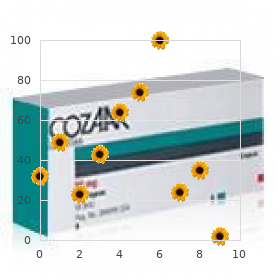
Prilosec 20 mg amex
It is generally identified during evaluation o in ertility when documentation o tubal patency is sought. During cannulation, makes an attempt are made to ush debris rom inside the tubes and perorm chromotubation. Proximal allopian tube cannulation may be used to treat as much as eighty five p.c o proximal tubal obstructions, but the occlusion could recur ollowing the surgery. It may be per ormed as an outpatient radiologic process utilizing uoroscopy (Papaioannou, 2003). Alternatively, cannula placement could also be accomplished with hysteroscopic steerage (Con no, 2003). I a hysteroscopic approach is chosen, laparoscopy is usually used concurrently. This allows evaluation and treatment o each proximal and distal tubal illness and offers identi cation o tubal per oration by the cannulating information wire i this occurs. T us, consideration o and consent or salpingectomy should accompany plans or proximal tubal cannulation. The affected person is positioned in standard lithotomy position, the stomach and vagina are surgically ready, and a Foley catheter is inserted. No electrosurgery is required or tubal cannulation, thus saline is the pre erred medium. Because a smaller diameter operative hysteroscope is required or tubal cannulation, cervical dilatation may not be required. A panoramic inspection o the whole cavity is per ormed, and the tubal ostia are identi ed. Under direct visual steering, the outer catheter is advanced and positioned at one o the tubal ostia. The internal catheter is then threaded approximately 2 cm into the proximal allopian tube. The laparoscope is positioned to allow inspection o the distal tube to note the presence or absence o dye spill. However, as a end result of adhesions ollowing such in ection can have damaging ef ects on allopian tube health, patients are given both a rst- or second-generation cephalosporin prior to surgery. In addition, misoprostol may be used preoperatively to aid cervical so tening and hysteroscope insertion. The preset bend o the outer cannula aids placement o each the inside cannula and information wire into the tubal ostium. Once the inner cannula has been threaded into the proximal allopian tube, the guide wire is eliminated. The internal cannula, now emptied o the information wire, can be utilized to ush debris rom the allopian tube and permit chromotubation, which is visualized laparoscopically. H ysteroscopic tubal cannulation with Consent In addition to basic complications associated with hysteroscopy and laparoscopy, patients present process proximal tubal cannulation are in ormed o the small threat o tubal per oration. I distal tubal adhesions are famous, laparoscopic lysis o adhesions may be concurrently per ormed. Less generally, they might outcome rom pelvic radiation, tuberculous endometritis, or endometrial ablation. The presence o these adhesions, also termed Asherman syndrome, may result in hypo- or amenorrhea, pelvic ache, and in ertility or pregnancy loss. T us, skinny adhesions can often be lysed utilizing only gentle blunt orce rom the hysteroscopic sheath. However, dense adhesions normally require hysteroscopic division with scissors or laser. Postsurgical being pregnant and live delivery rates are markers o surgical success, and these charges range depending on the thickness o adhesions and degree o cavity obliteration. For this cause, numerous adhesion classi cation systems are use ul to help predict the success o adhesiolysis or a given lady (Al-Inany, 2001). However, a ter adhesions have been noted, diagnostic hysteroscopy is really helpful to assess the thickness and density o these bands (Fayez, 1987). Additionally, completion o ertility assessment, together with semen evaluation and evaluation o ovulation, is really helpful prior to surgical procedure to assist predict possibilities o conception ollowing the process. Hysteroscopic lysis o adhesions is usually a day-surgery procedure per ormed beneath general anesthesia.
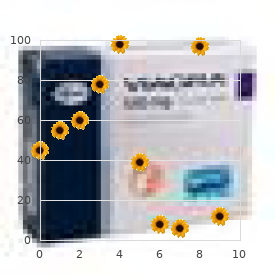
20mg prilosec otc
The stoma and stents are care ully pulled through the incision till a minimum of 2 cm o ileum protrudes through the skin. The mesentery may have to be trimmed or the abdominal wall opening urther dissected to accommodate the conduit. The stoma is completed with 3�0 gauge delayed-absorbable "rosebud" stitches that include the ileal mucosa, intervening bowel serosa, and pores and skin dermis. The le t ureteral anastomosis is accomplished with additional circum erential sutures to obtain a watertight closure. The anastomotic site or the right ureter is selected a minimal of 2 to 3 cm distal to that o the le t along the length o the conduit. Saline with methylene blue dye is used to ll the conduit and observe or watertight integrity. Urinary stulas and ureteral obstruction are unusual but are probably li e-threatening i not addressed with percutaneous drainage or reoperation. Prolonged bowel dys unction might indicate an anastomotic urine leak or small-bowel obstruction. Patients o ten are readmitted inside a ew weeks o surgical procedure due to partial small bowel obstruction, urinary in ection, wound separation, or other comparatively minor issues o exenteration. Predictably, the general morbidity o creating an incontinent conduit is much larger in previously irradiated sufferers (Houvenaeghel, 2004). Individual silk sutures placed through each stent may be secured at the pores and skin to stop stent dislodgment over the rst ew postoperative days. For this kind o conduit, the hepatic and splenic lexures o the transverse colon are ully mobilized. When per ormed in the usual setting o an exenteration with le t decrease quadrant colostomy, the bowel segment should measure approximately 20 cm to reach the best decrease quadrant. Ureters are su ciently mobilized in the retroperitoneal house, and each are brought out by way of a commodious peritoneal opening to attain the conduit. The ureteral anastomoses are then accomplished, ideally at the teniae coli, over stents. The stoma can be made at the preselected site, however it may be repositioned virtually anywhere that the conduit will comortably attain. The stomal end o the conduit is introduced via the anterior belly wall and secured. Mesenteric de ects require closure to stop inner hernias but not so tightly as to compromise blood supply. A suction drain could also be positioned i integrity o the anastomoses and leakage is a concern. Surgeries for Gynecologic Malignancies 1161 forty six 8 Removal o the bladder throughout total or anterior exenteration is the primary indication or a continent urinary conduit. Vesicovaginal stulas and disabling incontinence ollowing radiation remedy are different less common reasons. Following cystectomy, urine is diverted into a reservoir created rom a resected bowel section. Depending on their building, these diversions may render a girl continent or incontinent. The operation is extra complicated than an incontinent diversion procedure and should result in extra postoperative problems (Karsenty, 2005). An best candidate or a continent conduit is a young, otherwise wholesome lady without a colostomy. In gynecologic oncology, the continent ileocolonic urinary reservoir (Miami pouch) has turn into the most well-liked selection (Salom, 2004). This pouch is technically straight orward to construct and uses tissues that characteristically lie in nonirradiated areas (Penalver, 1998). A Miami pouch includes a distal ileum segment, the ascending colon, and a portion o transverse colon. The primary steps involve opening the colon phase alongside the size o the tenia and olding it onto itsel. The walls o the ascending and transverse colon are then sewn together to achieve a reservoir with low intraluminal pressure.
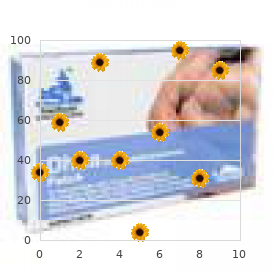
Buy line prilosec
These women void with abdominal straining rather than with detrusor contraction and urethral relaxation. Most incontinence procedures stop leakage by closing the urethra throughout cough or Valsalva maneuver. There ore, these surgical procedures, when per ormed in ladies who depend on the Valsalva maneuver to urinate, will o ten result in voiding dys unction. A H Intraoperative issues embrace hemorrhage, bladder per oration, and barely, bowel harm. Small changes in the place o the hand applying handle pressure can lead to bladder per oration. A ter the needle per orates the abdominal wall, the Foley and catheter information are removed, and cystourethroscopy is per ormed with a 70-degree cystoscope. Generally, per oration might be obvious, and the V needle might be seen entering and exiting the bladder. In this case, the needle is removed and redirected, and proper placement is con irmed by cystoscopy. Inspection o the urethra can additionally be important and could be per ormed with the same 70-degree angle scope. In contrast to bladder per oration, urethral per oration theoretically carries a threat o urethrovaginal stula. T us, i urethral per oration is famous, most surgeons abort the procedure and postpone till a quantity of months later. Next, the other V needle is attached to the introducer and is positioned on the other facet o the urethra in an identical ashion. A hemostat or related instrument is placed between the suburethral tissue and the tape to act as a spacer and create distance between the mesh and urethra. Prior to sheath removal, the vaginal sulci are inspected to exclude per oration o the vaginal epithelium occurring throughout needle steerage. I per orated mesh is seen, the tape is removed, and the V needle is once more passed by way of a newly created periurethral tunnel that lies slightly medial to the original. The vaginal per oration de ect is repaired with one or two simple interrupted delayed-absorbable sutures. A hand placed within the vagina then care ully guides the needle around the back o the ramus. With perfect positioning, a ew millimeters o ree area separate the suburethral tissue and mesh. Prior to discharge rom a day-surgery unit, an lively voiding trial is per ormed (Chap. I the affected person ails this trial, a Foley catheter is replaced and saved or 1 to 3 days prior to a second voiding trial. Intercourse, nevertheless, is postponed until the vaginal incision is healed, usually at 6 weeks. With the O procedure, a everlasting sling materials is inserted bilaterally through the obturator oramen and extends beneath the midurethra. As a end result, the area o Retzius is avoided and thereby minimizes the potential or related bladder and bowel accidents. Bleeding within the house o Retzius is a primary V complication, and avoiding this area is an attractive O eature. The process has a quantity of essential di erences rom V, and there are also several modi cations o the O process itsel. Several corporations produce kits containing required mesh and placement needles or O. Currently, the out-to-in technique is extra commonly perormed and is described right here. Inappropriate O trocar placement not often can lead to signi cant hemorrhage or neurologic de cits i obturator nerve and vessel branches are broken within the thigh compartment. Using Metzenbaum scissors and blunt inger dissection, bilateral periurethral tunnels are created beneath the vaginal epithelium on both facet o the urethra. During this arc, the needle sequentially penetrates the gracilis, adductor brevis, and obturator externus muscle tissue, obturator membrane, obturator internus muscle, and periurethral endopelvic ascia and exits via the vaginal incision. A vaginal inger is positioned in the ipsilateral vaginal tunnel and is positioned up to and behind the ischiopubic ramus.
References
- Lopez-Rios F, Chuai S, Flores R, et al. Global gene expression profiling of pleural mesotheliomas: overexpression of aurora kinases and P16/CDKN2A deletion as prognostic factors and critical evaluation of microarray-based prognostic prediction. Cancer Res 2006;66(6):2970-2979.
- Shi Y, Galusha SA, Rock KL. Cutting edge: elimination of an endogenous adjuvant reduces the activation of CD8 T lymphocytes to transplanted cells and in an autoimmune diabetes model. J Immunol 2006; 176:3905-8.
- Konstantinov IE, Van Arsdell GS, O' Blenes S, Roy N, Campbell A. Retroaortic innominate vein with coarctation of the aorta: Surgical repair and embryology review. Ann Thorac Surg. 2003;75:1014-6.
- Braat SH, de Zwaan C, Brugada P, et al: Right ventricular involvement with acute inferior wall myocardial infarction identifies high risk of developing atrioventricular nodal conduction disturbances. Am Heart J 1984;107:1183-1187.
- Matthews DE, Roberts T: Intra-articular lidocaine versus intravenous analgesic for reduction of acute anterior shoulder dislocations: a prospective randomized study. Am J Sports Med 23:54, 1995.
- Jiang Z, Woda BA, Wu CL, et al: Discovery and clinical application of a novel prostate cancer marker:alpha-methylacyl CoA racemase (P504S), Am J Clin Pathol 122(2):275n289, 2004.
- Lenfers BH, Loeffler TM, Droege CM, et al. Substantial activity of budesonide in patients with irinotecan (CPT11) and 5-fluorouracil induced diarrhea and failure of loperamide treatment. Ann Oncol 1999;10(10):1251-1253.